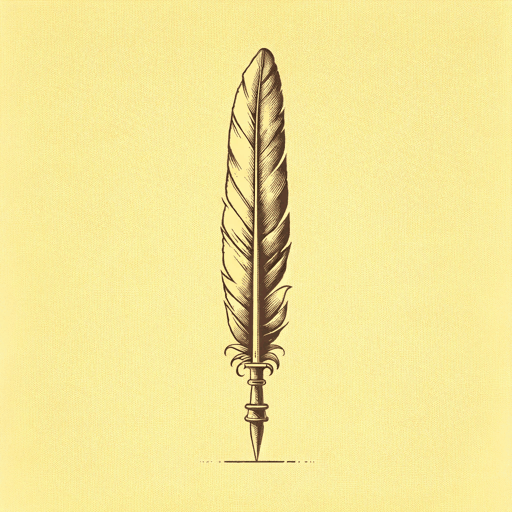50 pages • 1 hour read
David McCulloughThe Pioneers: The Heroic Story of the Settlers Who Brought the American Ideal West
Nonfiction | Book | Adult | Published in 2019A modern alternative to SparkNotes and CliffsNotes, SuperSummary offers high-quality Study Guides with detailed chapter summaries and analysis of major themes, characters, and more.
Summary and Study Guide
Overview
In The Pioneers: The Heroic Story of the Settlers Who Brought the American Ideal West, David McCullough argues that the founding settlers of the Northwest Territory were motivated to spread the American ideals of religious freedom, opposition to slavery, and advancement of education westward. Despite tremendous obstacles, the pioneers worked to make the implementation of these ideals a reality. McCullough is a Pulitzer Prize winner and the author of several books on American history. The Pioneers became a New York Times bestseller.
This guide uses the 2019 Simon & Schuster paperback edition.
Content Warning: McCullough refers to Indigenous peoples as “Indians” throughout the work, and he additionally quotes the pioneers, who sometimes used derogatory slurs for Indigenous peoples.
Summary
In 1786, a group of veterans, led by Rufus Putnam, met in Boston to create a plan to settle the Northwest Territory. Acquired as part of the Treaty ending the Revolutionary War, the Northwest Territory would ultimately become the states of Ohio, Indiana, Illinois, Michigan, and Wisconsin. The group created the Ohio Company, with Putnam as its chair, and commissioned Manasseh Cutler to negotiate the purchase of this land from the US Congress.
Seeking to create societies in the Northwest based on the values of New England, the group insisted on a prohibition on slavery, religious freedom, and an emphasis on education. The US Congress passed the Northwest Ordinance on these favorable terms on July 27, 1787. For 3.5 million dollars, the US government ceded 5 million acres to the Ohio and Scioto Companies. The Scioto Company was a venture in land speculation and would later be enveloped in scandal. In contrast, the Ohio Company, which acquired 1.5 million acres, would ensure that the settlement of this territory would be consistent with American values.
Later that year, the first group of pioneers, with M. Cutler’s son Jervis and Putnam among them, set out for the Northwest Territory. M. Cutler would remain behind but was nonetheless influential in the early settlement’s development. The trip to the territory in 1787-1788 was treacherous and difficult. The pioneers had to cross the Allegheny Mountains on foot in bad weather. When they reached Sumerill’s Ferry, southeast of Pittsburgh, they had to build boats to cross the Ohio River. Finally, on April 7, 1788, the pioneers arrived at their destination. They cleared the land of large trees, built shelters and, at Putnam’s urging, constructed a stockade for defensive purposes. Naming the settlement Marietta for the Queen of France, the pioneers took pride in its development. Other pioneers soon followed.
At first, relations with the Indigenous tribes were cordial. There were exceptions, as a couple of tribes slaughtered the wildlife in the surrounding forests hoping to starve the pioneers into departure. As the pioneers moved beyond Marietta to create other settlements, relations deteriorated. A surveying party and settlement upstream were attacked, with pioneers killed. Writing to President Washington, Putnam sought help. In response, Congress created a force of 2,000 soldiers under the command of Arthur St. Clair, who was the governor of the Northwest Territory. The troops were not disciplined, and St. Clair was not up to the task of commanding them. The expedition into the interior thus ended in disaster, with 1,094 killed compared to only 21 Indigenous people. Subsequently, a new commander was named to lead better-disciplined troops, which resulted in a major victory for the US government in August 1794. That victory cleared the way for the Treaty of Greenville, which confined Indigenous tribes to the north and west and opened south and east Ohio to an onslaught of settlers. In the American imagination, the appeal of the west was growing in strength.
By the mid-1790s, some of the early settlers were achieving success. Joseph Barker, for example, had established himself as an architect and builder of superior talent. When a ship navigated the Ohio River all the way to New Orleans and to the ocean, Barker established a shipbuilding business. That industry would become critical to Marietta’s economy. Given his reputation, two wealthy and atypical settlers, the Blennerhassetts, commissioned Barker to build a mansion on an island, owned by the state of Virginia, just off the shore of a settlement. However, Harman Blennerhassett would later get mixed up with Aaron Burr’s treacherous plot to encourage western secession. Even though Blennerhassett and Burr would be acquitted of treason, Blennerhassett and his wife had to flee from their mansion and they lost their riches.
In 1795, M. Cutler’s son Ephraim moved to Marietta with his wife Leah and their children. In the difficult journey from Connecticut, two of his four children died. Once in Marietta, E. Cutler, who had experience as a farmer, bought land with the intention of creating additional settlements. Named to a few civic posts, E. Cutler performed his duties diligently and was ultimately elected to the state legislature. Participating with Putnam as a delegate to the state’s constitutional convention, the two ensured that slavery would not be allowed in Ohio, which was admitted to the union on February 19, 1803. E. Cutler fought successfully for an educational bill with funding for common schools and he advocated for the creation of Ohio University. Putnam pushed the cause of education too, helping to found the first school in Marietta. Later, when Marietta became a crossroads for enslaved people escaping to Canada, relatives of Putnam, E. Cutler, and others in Marietta assisted the runaways via the Underground Railroad. In short, these early settlers were committed to making the founding ideals of freedom and education a reality in the state.
The settlers faced much adversity with courage. Illnesses, such as yellow fever, struck, taking the lives of many. Samuel Hildreth, a physician, arrived in October 1806. Settling in Belpre, Hildreth established a stellar reputation and built a lucrative frontier practice. At a moment’s notice, he would travel to the interior to care for patients. Personifying the founding ideals of Marietta, Hildreth was intellectually curious and committed to the advancement of knowledge. He not only wrote scientific articles but later published historical accounts of the pioneers’ early experiences. In the 1830s, when they were in their fifties, he and his wife Rhoda traveled east for a visit. They marveled at how technological advancements in travel, such as steamships and railroads, made the trip faster and easier. Those advancements additionally increased the numbers of people visiting and settling in the west.
The Embargo Act of 1807, which prohibited the export of goods, hit the shipbuilding industry of Marietta and its economy hard. Later, the War of 1812 stoked fears that conflicts with Indigenous peoples, who were aided by British soldiers, would resume. That turned out not to be the case, and with the conclusion of the war in 1814, the steady flow of pioneers and visitors resumed. Indigenous people were instead forced from Ohio after the passage of the Removal Act of 1830. Noting the observations of visitors to the west, McCullough highlights the contradiction between the founding ideals and the treatment of Indigenous peoples.
When chronicling the deaths of Putnam, Hildreth, E. Cutler, and Barker, McCullough recounts their enormous contributions to fulfilling the founding vision of the pioneers. It was through the efforts of these individuals and others that the American way of life was carried west.
Related Titles
By David McCullough

1776
David McCullough

Brave Companions
David McCullough

John Adams
David McCullough

Mornings on Horseback
David McCullough

The Great Bridge
David McCullough

The Greater Journey: Americans in Paris
David McCullough

The Johnstown Flood
David McCullough

The Path Between the Seas
David McCullough

The Wright Brothers
David McCullough

Truman
David McCullough

